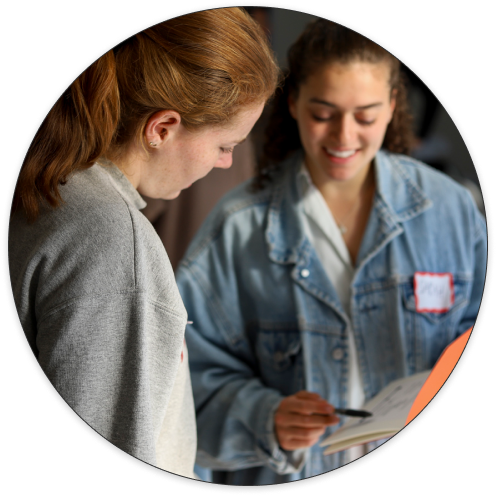LOOKING FOR TALENT?
Build capacity in your organization and find remarkable talent from Stanford's Design program.
Your most valuable asset is your team. Finding someone talented, communicative, and teachable, is magic. But that search can be a huge investment of time and energy.
Design Formation at Stanford is your chance to find bright and budding talent for your most pressing projects. Building upon the new undergraduate Design degree, we help students with skills across design abilities to understand where they fit, tell their story, and work with teams during the summer and beyond.
Best part? There is no cost to become a Stanford Design Formation Host Company. All we ask is that your projects come with some type of compensation for the student.
Join us today and start looking for your next, new teammate!

Think about a team or company challenge across design, engineering, customer research, product management, or beyond. Post your project(s) on the Design Formation platform. You can post as many as you’d like.
When a student is interested in your project, they will send a request to connect which will include a link to their portfolio, Linkedin, and the reasons why they would like to learn more about your work.
As students send requests to connect, you can choose which ones you’d like to meet. Students will follow-up to share an initial conversation to learn more.
After your first call, students will follow-up with a draft proposal to join your team for a short-term to full-summer project. Together, you can define the deliverables, timeframe, and logistics.
There is no cost to become a Design Formation Host Company. You can post projects and gain access to this talent network right away. And there are no fees if you choose to hire a student. We simply ask that companies compensate students for the work they complete.
Each project will vary in scope and length. We invite you to consider the time needed to complete the project as well as the value of the final deliverables as you consider appropriate compensation. A good benchmark may be to consider how you compensate entry-level teammates. If you are unable to offer monetary compensation, consider travel stipends, housing, etc. The exact terms of each project will be negotiated directly between you and the student.
Feel free to post your full internship! However, we encourage Host Companies to post projects to think about what they truly need accomplished and to ensure they will find the right person. Students are then able to do the important work of learning how to identify and “pitch” for projects most aligned with their interests and abilities – skills that are becoming increasingly important in this shifting landscape of work. If your company has an internship program aligned with our student’s skills, simply post the overview to the internship along with information about where the student can submit an application.
Stanford Design students study three main design methods:
Each student also chooses a “Domain” where they gain cursory knowledge of how design is applied in the corresponding industry. Domains include:
Projects have spanned every type of design from physical manufacturing, to web and mobile design, to AI research and engineering. The time frame for projects has ranged between 2 weeks to full summer. Once you sign up for the platform, we’ll send a list of sample projects to help you begin and tailor for your needs.
Yes! We host conversations and workshops for companies within the Design Formation community throughout the year.